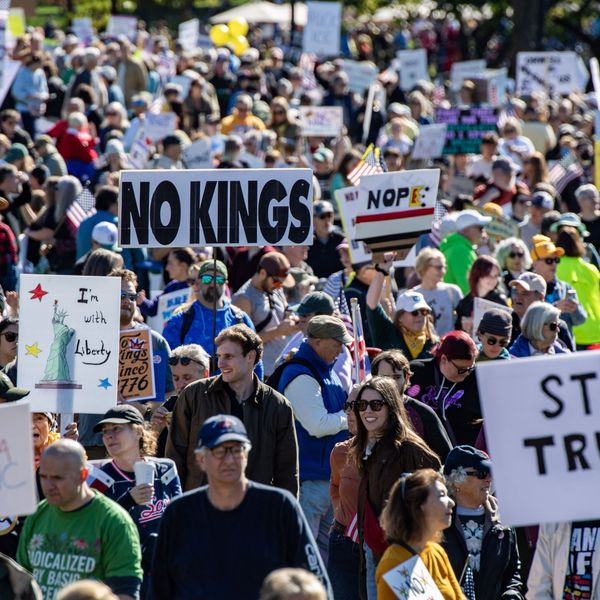Over the past 5,600 years, historians estimate that 14,600 wars have been waged. In the twentieth century alone, over 100 million people were killed in wars all over the world although some atrocitologists figure that as many as 258,327,000 people died from massacres, slaughters, oppressions, and famines that resulted from or preceded these wars. This latter figure reflects the calculation the Lancet Report made when it said that 655,000 Iraqis had died since the United States invaded their country in 2003.
Given history's record and the current state of affairs in Iraq, it might be time for us to admit that war is normal, peace is not, and that we as a human race are committed to war no matter the cost. Unfortunately, this view is nothing new. The ancient Greeks saw war not only as the natural order of things but as the inevitable: the clashing of forces offered the possibility of a new creation in the world. Shortly after the end the French Revolution's Reign of Terror, a revolution ostensibly based on reason and scientific truth as an alternative to faith and belief, Immanuel Kant conceded that: "The state of peace among men living side by side is not the natural state; the natural state is one of war." And now, when terrorism and weapons of mass destruction serve as ways of solving conflict, James Hillman suggests in his book, A Terrible Love of War, that as brutal and ugly as war is, it remains one of the most meaningful and transcendent experiences for its survivors because of its appeal to the warrior within. Perhaps a look at who this warrior is will help us understand our apparent attraction and disposition toward war so that we can deal with it before it destroys us.
According to Jungian psychology, the warrior is an archetype, which is an idealized role or identity embedded in our cultural narratives that guides our minds and actions. Archetypes have a mythic quality that bid us to act out a particular role for certain situations automatically. One of these roles is the warrior, the one who overcomes an enemy to protect his homeland and save his people. We easily recognize him; he is the Lone Ranger, Batman, Superman, and Captain Kirk.
The reason why the warrior is one of the most powerful of all the archetypes is because war itself is so pervasive and the human will to survive is such a key instinct. As a result, war moves the warrior to place himself in danger and call upon his courage, skill, and intelligence to endure conditions of discomfort, pain, suffering, even death.
Michael Gurian illustrates the values and traditions of warriorhood in The Prince and the King. For example, the warrior must always believe that he is fighting a just cause to preserve his society, fellow warriors and himself and that what he does matters to those who send him to war. The warrior is also trained to promote dignity and honor to himself and his opponents. He realizes that his first priority is to protect life and not destroy it. Consequently, he understands that although he may be forced to kill, he is deliberate and knows the boundaries of killing, i.e., he does not slaughter or engage in total or random destruction of his opponent.
As noble as the warrior is, he has a flip side called the shadow warrior. Robert Moore in The Warrior Within, describes the shadow warrior as the one who betrays truth, forsakes honor, follows [or gives] immoral orders, propagates policies based upon falsehoods or ignorance and fosters blind patriotism or allegiance. The shadow warrior typically disregards human suffering without the need to alleviate it, confronts all threats without regard for violence, and hungers for victory or power and disguises it as a pursuit of moral and spiritual principles.
The shadow warrior is "a twisted version of warriorhood that comes from an immature psyche still trying to prove itself in a world it fears," says Ed Tick, author of War and the Soul and a Jungian psychoanalyst who has been working with Vietnam veterans with PTSD since 1978--and now sees Iraq and Afghanistan vets. He characterizes the shadow warrior as having a "lack of control of aggression, insensitivity to relatedness, desire for vengeance, enjoyment of carnage and cruelty, scorn toward the vulnerable, hostility toward the feminine and everything soft, and compulsive [with] workaholic tendencies."
Given our government's performance in the post-9/11 era, it has become especially obvious that the shadow warrior has seeped itself into America. Torture for prisoners has been approved. Habeas corpus has been suspended. Spying on Americans through their telephone records has been authorized. Brave men and women who were sent to Iraq based on lies and deceptions are now stuck in Iraq with no end in sight. And now the Congress has approved yet another $100 billion in "emergency funding."
War in the 21st century has already presented the world with some gruesome questions about how soldiers fight and for what cause. So far, we have seen a "scorched earth policy" that prefers annihilation over negotiation and a curtailment of human rights, including those of very citizens who are supposed to be protected from their enemies. The survival of humanity is also more apparent as more lethal weapons have enabled all too easily both governments and individuals (i.e., the terrorists) to commit genocide and potential planetary suicide.
On this Memorial Day, let us recognize the honor, dignity and truth of the real warriors and realize how easily the shadow warrior can overtake us. Let us also be clear that our government is not going to stop these wars. In a real democracy, only the people can do that. The question is: are we up to it?

